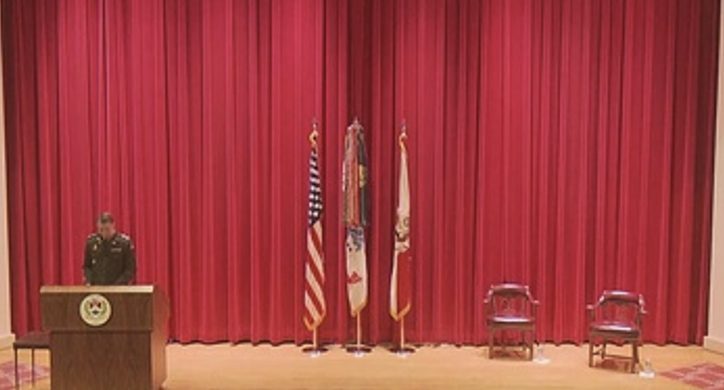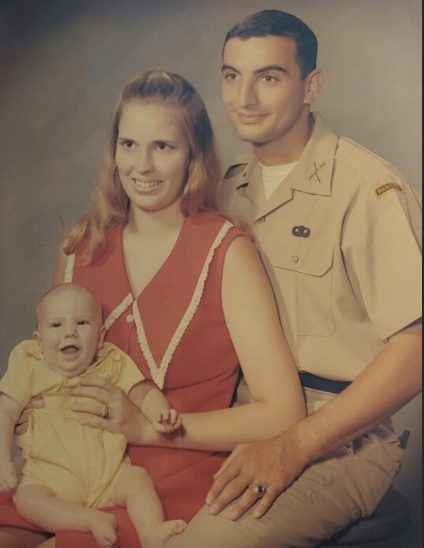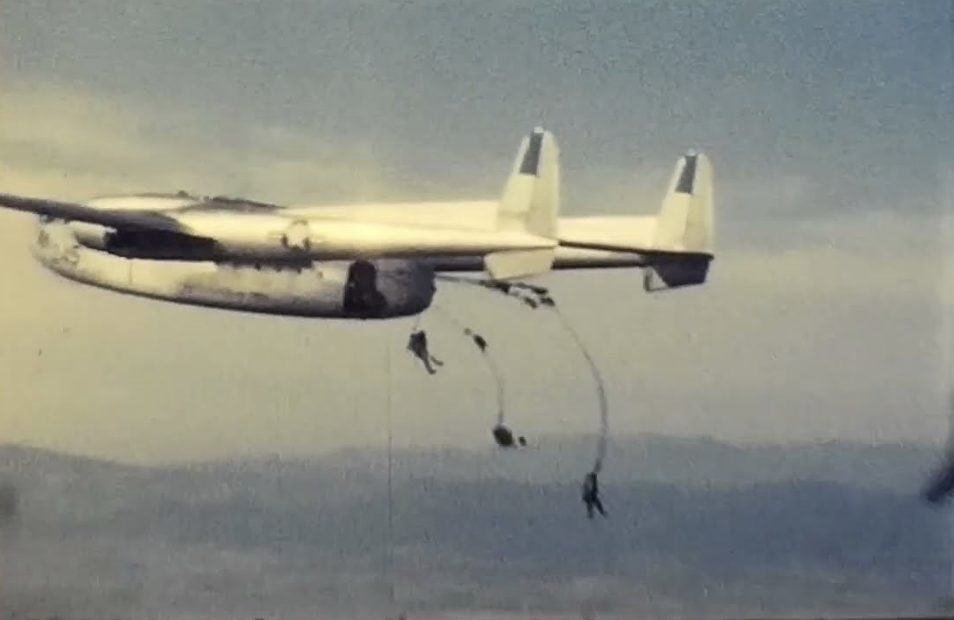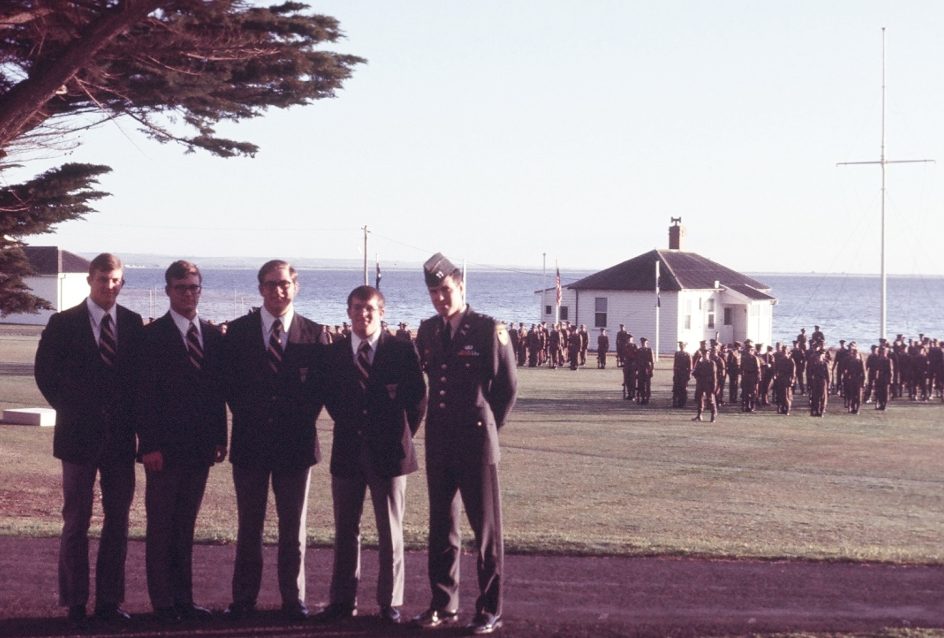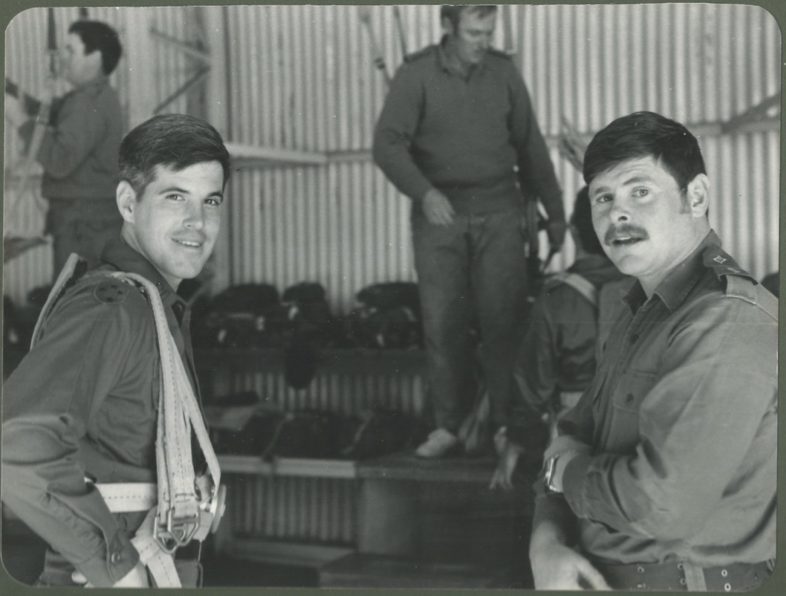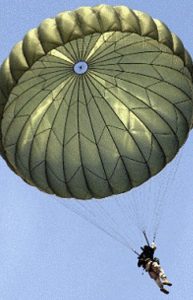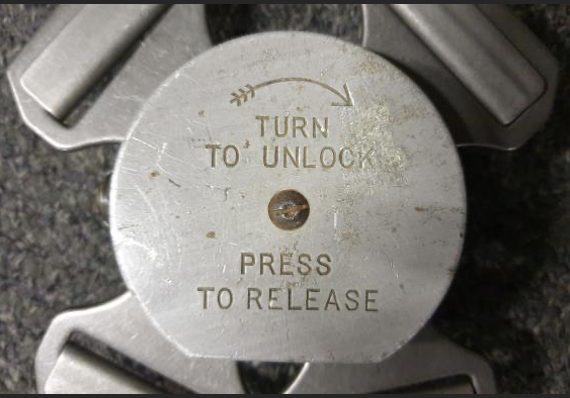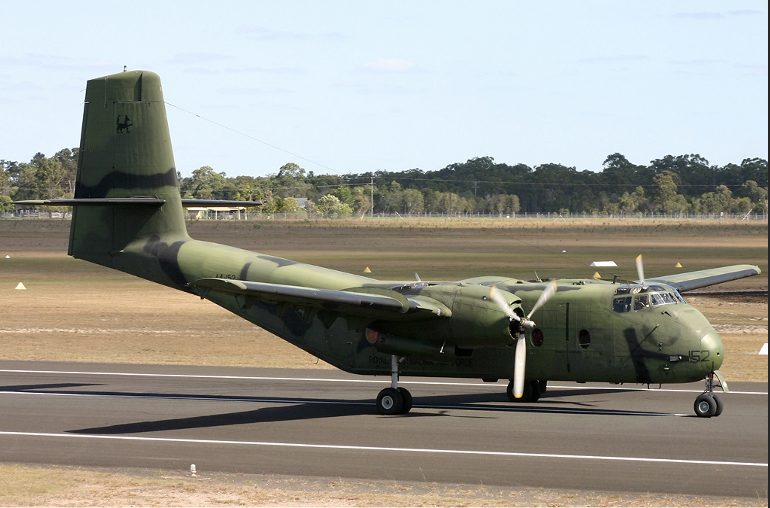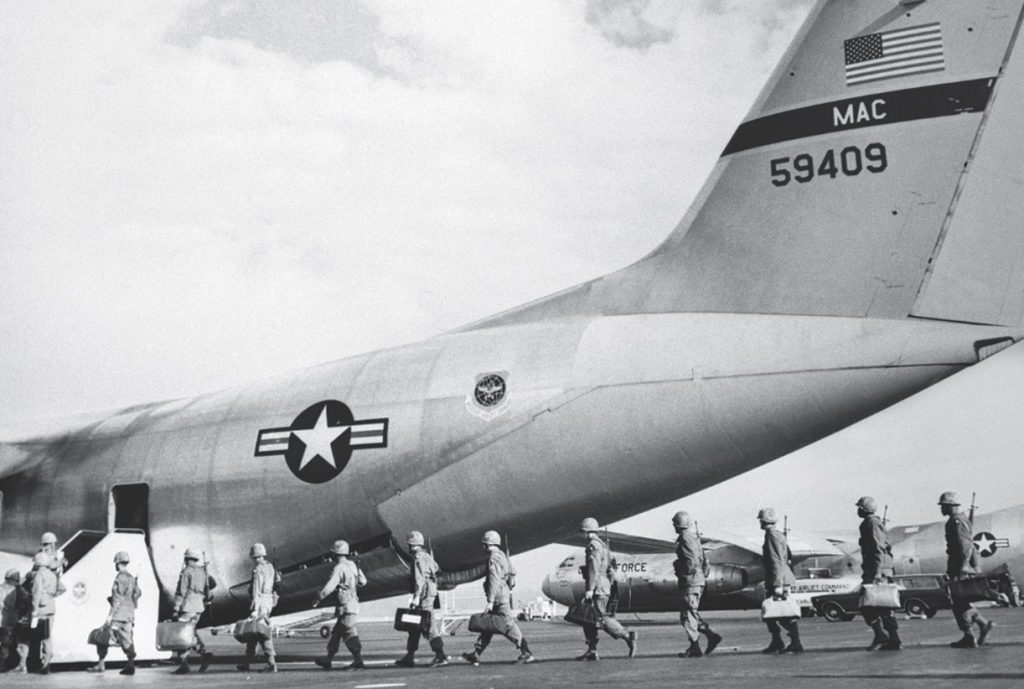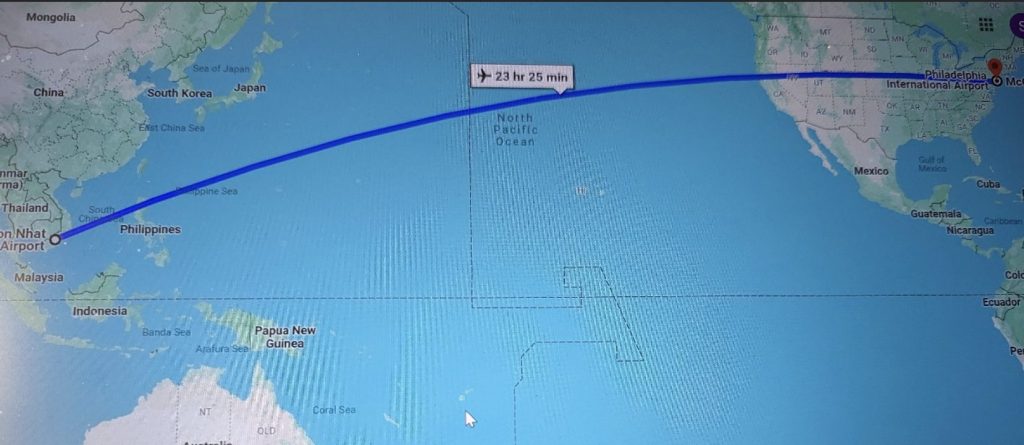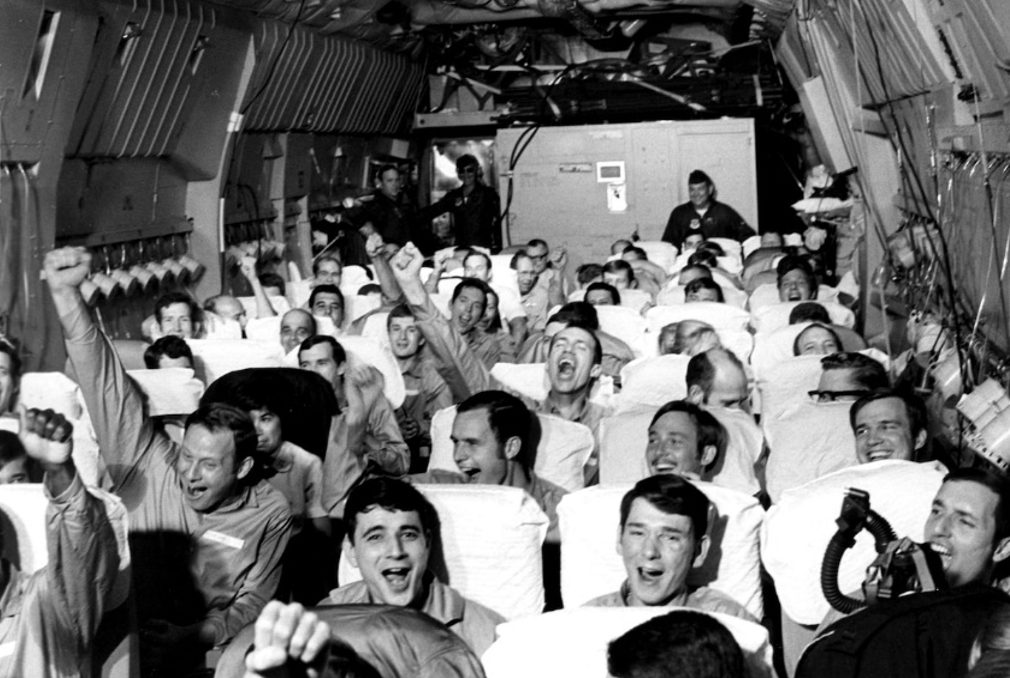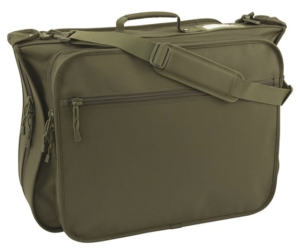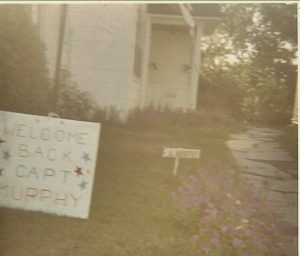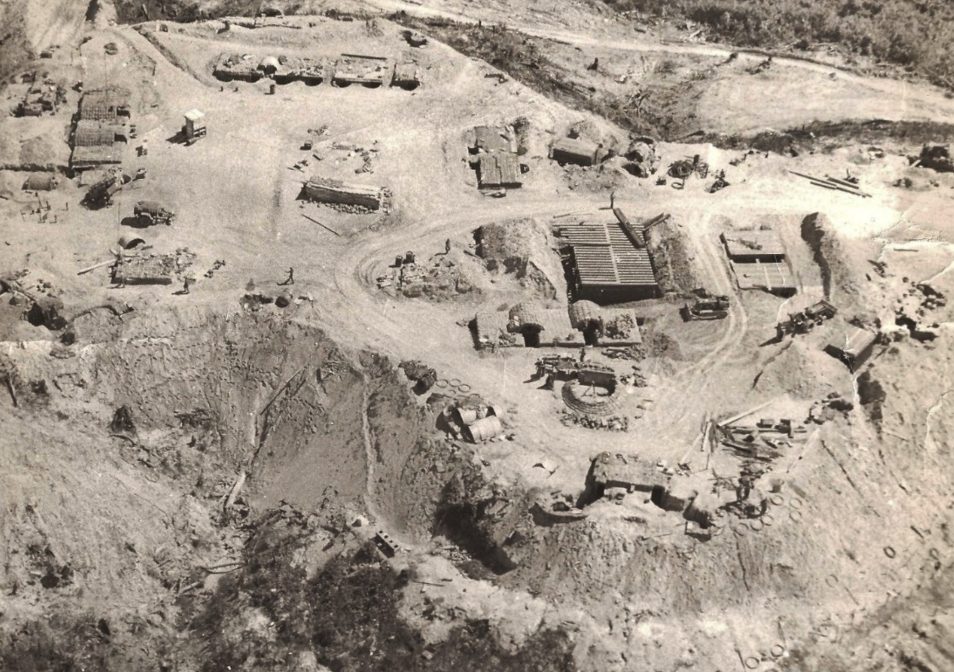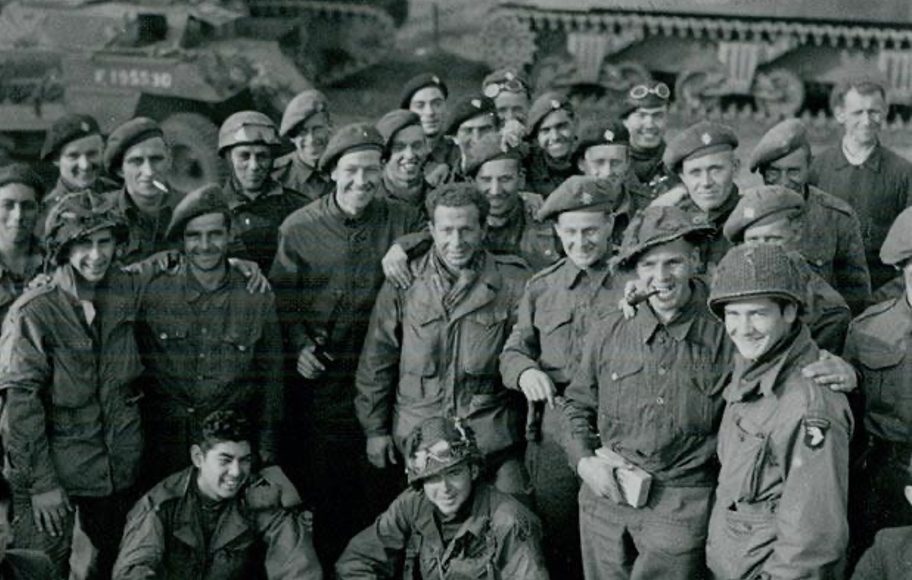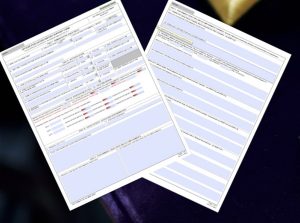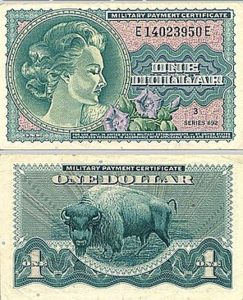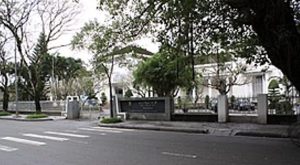
T’was in the summer of 1970 that I, with my wife, Pat, and newborn baby Jim, traveled the long road from Fort Bragg, North Carolina to Northern Virginia seeking refuge for them. I had been summoned by the rulers of the land to do my sworn duty on the fields of battle (Vietnam). Thusly, I spent the few days remaining to us settling them into place with her nuclear family. Whilst in the midst of the necessary preparations, I journeyed to Fort Belvoir to purchase from the market there (the PX) accoutrements to tend to our immediate future. And, lo, there I espied a document (the Army Times) with the posted listing of the entire cohort of 2nd Lieutenants newly promoted to the esteemed rank of 1st Lieutenant. Yea, verily, therein was the clearly legible name: James Richard McDonough.
I hastened back to tell Pat the exciting news but, on the way, realized that the day of promotion had already come and gone (the aforementioned document being a dated one of a week or so before) and since I had already departed my prior unit (which had itself since departed Fort Bragg for a long-duration military exercise) I was stuck — or so I believed–with not being promoted. The more I thought about it, the greater became my consternation. With no one to promote me, would I now fall behind my year group, even if only by a few weeks? And what of my pay? Would the greater bonanza of a 1st Lieutenant’s salary be denied to me? To whom could I turn to get promoted properly? Should I ask the cadre at Jungle Warfare School (my next stop on the way to Vietnam) if they could promote me? Should I ask my company commander when I got to Vietnam? And what insignia should I wear in the meantime – the gold bar I now wore or the silver one that signifies the higher rank? These and several other troubling thoughts laid heavy on my mind.
However, being properly prepared by my four years at West Point to face even the greatest of challenges, I steadied myself and by the time I arrived at Pat’s side had resolved to take the initiative to straighten things out. After sharing the good news of a promotion (only lightly indicating any concerns), I announced that the very next day we would travel to Fort McNair in nearby Washington to get some clarifying instructions. Why Fort McNair? I had no idea (so work the minds of Lieutenants). Although I detected a look of bewilderment in Pat’s eyes, she nevertheless trusted my vast knowledge of military matters and consented to accompanying me.
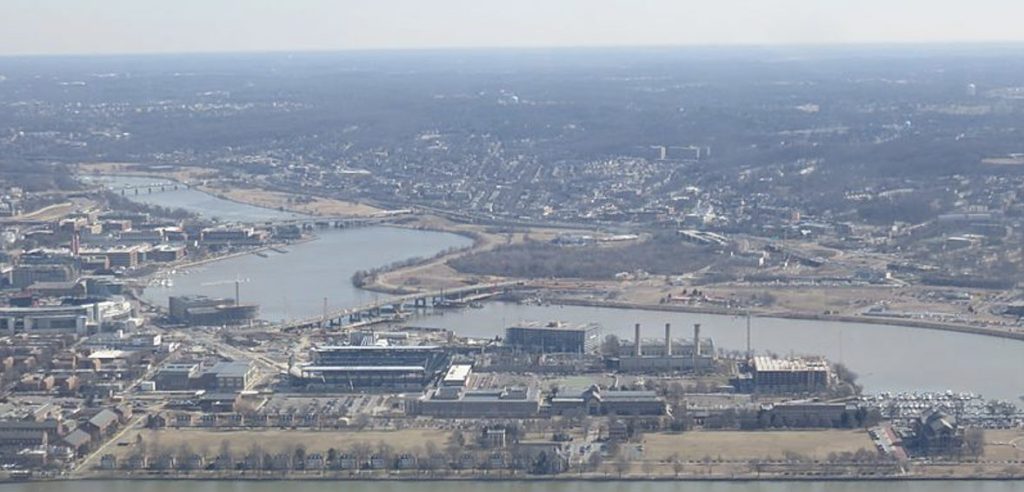
The next morning, we arose early and arrived soon enough at McNair, where I showed my military acumen by asking the MP at the gate how I might find the “personnel office”. “Sorry, Lieutenant, I don’t know,” he answered, “perhaps you could ask someone on post. Now could you please drive through so the cars behind you can get by.” It was a reasonable answer, I thought, although I was surprised that he didn’t know. Perhaps I should have been more specific.
At any rate, once we parked, I followed his advice and asked a few uniformed officers and non-commissioned officers passing by where the appropriate office was, always being sure to render proper military courtesies when doing so. Although all were polite, none were quite sure what I meant. One, however, did suggest that at the far end of the nearby parade field was a large ‘administrative’ building that might hold the answer. So, with our objective in sight, off we went.
All such ‘administrative’ buildings, at least in those days, tended to be a maze in themselves. Once we passed through the front doors, we saw only long hallways and unintelligible acronyms abutting each room. Bit by bit, however, we resolutely made our way, now and then asking directions and, for the most part, getting bemused looks back for our trouble. Finally, one charitable soul thought about it a bit and gave us a floor and room number to head toward. I sensed we were closing in on our quarry.
Here, a nice lady took a moment to ask us why we were there and what help we might need. She listened to my summarization of the issue at hand and then she asked that we wait for a moment while she went to yet another room nearby. A short time later, she returned and asked us to accompany her to meet the official who ‘might’ be able to help. Here we met an Army Major (whose name I am ashamed to admit I do not recall) who politely invited us to sit and explain to him what was going on. So, I did, to which he listened both patiently and keenly before excusing himself, leaving Pat and me alone for what seemed like a long time. When he returned, he resumed his seat and reopened the conversation by asking us many questions about our backgrounds, how we met, where I was headed, did we have children, and so on. To say that he was engaging would be an understatement. I enjoyed the discussion, but quietly wondered why he was so curious, why he was able to pass so much time with us, what he actually did on this post, and why he just didn’t tell me what I had to do to get the promotion matter settled and done with.
After about 30 minutes or more, the door opened a crack and a uniformed figure signaled to the Major. Nodding to Pat and me, our host then arose, told us how much he had enjoyed our talk and asked that we join him as he led us towards yet another room where he stood back and gestured for us to open the door and go in. We did.
Therein stood a gathering of a dozen people or so, some in uniform, some without. On a table in the corner stood several refreshments – a small cake, a tray of cookies, a pitcher of Kool Aid. A flag stood at the head of the room, where the Major invited us to stand.
He then directed a non-commissioned officer to “Publish the Orders”, after which he produced two silver bars, giving one to Pat to pin on my hat while he affixed the other to my collar. I was promoted! I was also stunned, even as the line of strangers came by to shake hands and offer their congratulations.
In the hours, weeks, and ultimately years that followed I reflected on the lessons of that morning. I was not to believe that anytime and anywhere in every headquarters on every post an officer and his team of supporters are standing by for a wayward lieutenant to saunter in to be promoted. The good Major surely had many pressing things to do, but he did not let it preclude him from looking after a naïve lieutenant and his wife. He did not ask for reimbursement for the lieutenant bars or the refreshments, which he surely purchased himself. He did not make me feel self-conscious about my foolish and needless concerns about ‘not being promoted on time.” He did not bemoan the unexpected interruption to his day and the work-time loss of the people he gathered. Instead, he honored both Pat and me without the slightest reference to himself and in so doing showed me what leadership is all about – taking care of people over whom you have the authority to act and the capacity to help.
It was an example that I have never forgotten and have endeavored to emulate ever since whenever the opportunity arose. And although I look back upon the occasion with a significant degree of embarrassment, I realize what a wonderful and priceless moment it was.

